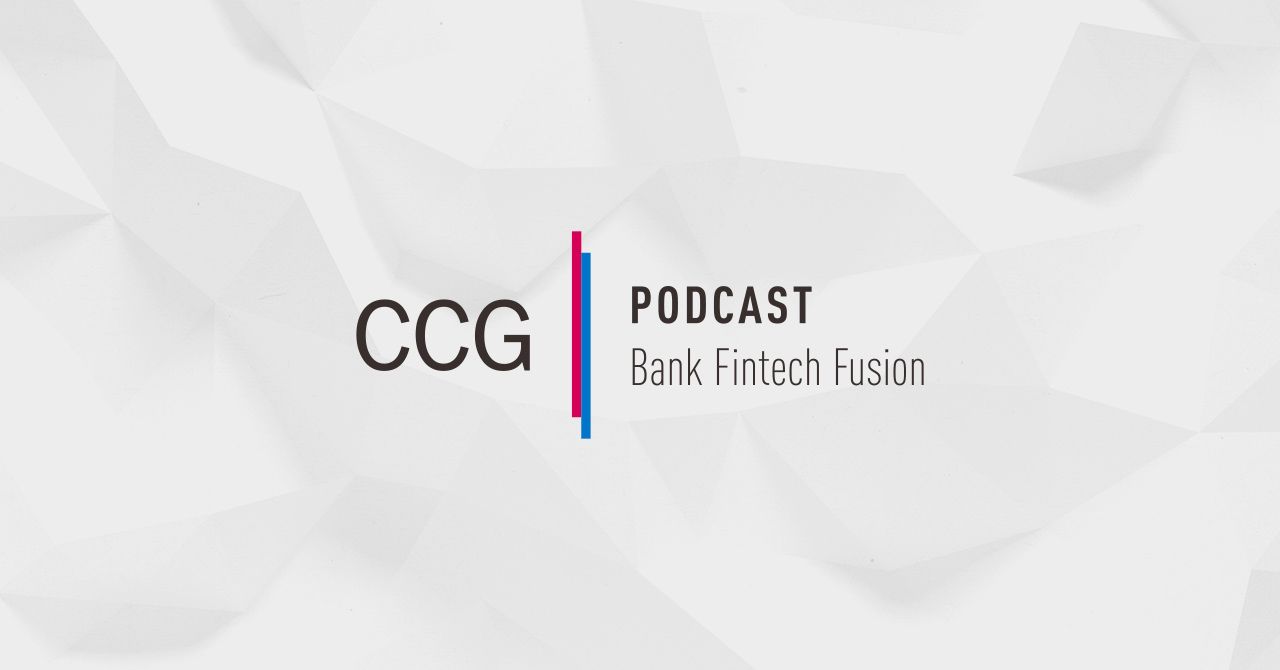What is change management and how is it implemented? To successfully implement process improvement, everyone must be on board and committed. Tune in as Tiana talks about the importance of communicating the why, establishing role clarity, and setting deadlines. She will also share what happens when change is not effectively communicated.
Podcast: Download (Duration: 10:38 – 11.0MB)
Subscribe: Google Podcasts
Read the full transcript here:
[00:00:04] Hello, welcome to Bank Fintech Fusion’s fourth episode of the Bank Operational Alignment series. I’m Tiana Brown, Principal at CCG Catalyst. And today we’re going to discuss the importance of communicating why, establishing role clarity and setting deadlines. This series is all about operational alignment and how your business unit can do its part in meeting the overall organizational goals. So far, we’ve talked through identifying how your business units performance supports reaching the overall organization goals, how to gain full visibility of the overall health of your business unit and last week we discussed how to act on the identified needs for improvement. Today, we will focus on implementing the changes by going through three steps towards change management. I am back with Ariana Vallejo, our Digital Production Consultant, who will help ensure our podcast resolutely. With that being said, let us get started.
Ariana Vallejo [00:01:11] So Tiana, to kick off today’s episode, what is the first step a leader in financial services can take towards effective change management?
Tiana Brown [00:01:20] Well, leaders in financial services must understand that they cannot do it alone. You are less likely to accomplish successful change within your organization without the help of other leaders and full engagement from your team members in order to actively pursue this engagement. You must be prepared to explain the changes that need to take place, begin to implement these changes and demonstrate that you believe in these changes. People are less likely to follow a leader that is not committed or sold out to the initiative they are leading. When leaders present these items or permanent needs for changes from an authoritarian approach, it’s not received well.
Ariana Vallejo [00:02:05] And so what is another way to keep the employees engaged during a mandatory operational change?
Tiana Brown [00:02:11] Great question, and that is the approach we’re coming from during this podcast, which is that when a need for change is identified, business leaders need all hands on deck to implement. First, we must understand the things that could lead us to this disengagement. We can sort of back up into your question. So reasons that a leadership team would be lacking employee engagement in first place could be the employees fear loss of their job as a result of these changes. So maybe this change is associated with automating an existing process. They have never seen change in the past. Possibly their leadership team looks disengaged. Therefore, there’s no buyin. And one that is really important to me is that employees are not made aware enough of why the change is taking place. We cannot underestimate the value of communicating why.
[00:03:11] Explaining the why to employees is a lot of things, but for sure it does. Three key things. One helps the employee to understand the reason for the change. Two, it helps them to see how the change is directly related to their work and how it could possibly impact their daily work. And three, in some cases, explaining the why defines a new responsibility for them to take on. Now, each of these can also result in the employee establishing a greater purpose in the work that they’re doing. And when you have people that are working within your organization to actually feel a sense of purpose, you will begin to see more wins. Now, when you choose to operate in an environment where change is dictated and not explained, that is where we find lack of engagement, employees unable to connect fully to the vision of the brand and lack of productivity does exist. People want to know that their skills belong in your workplace.
Ariana Vallejo [00:04:14] That’s interesting. And so what are some of the best practices to ensure that the changes are seen through till the very end?
Tiana Brown [00:04:23] Well, Ariana, I like this question because often changes are not seen through to the end. Let’s be honest. A lot of change is planned or attempted, but not actually completed. There’s actually a very low success rate for operational changes within organizations. For me, this would be classified as changes that are thoroughly seen through from start to finish, including the documented process. Now, some reasons for this could be that running the everyday business gets in the way of seeing this change all the way through. Or there may not have been a clear plan or real clarity in place to follow through to the end, not to mention changes often initiated by leaders from the CEO level down. Hence, this podcast is all about how your business unit supports the overall organizational goals. Now, if the mid-level leaders and employees are not properly informed or engaged with the plan, change could be impossible. Or the changes that do take place may not be the best changes for the business unit.
Ariana Vallejo [00:05:35] You mentioned changes aren’t always seen through till the end. Can you tell us some key tips that would ensure that changes are seen through to the end?
Tiana Brown [00:05:44] Well, you must know that just telling your teams about the change is not the same as engaging them. When you engage a team, you are including them. So engagement should be inclusive.
[00:05:59] Ways to include your people would be to assign informal leaders to the new process implementation. This could be top performers, team leaders or someone that shows interest in the particular function or skill set. You could and really should include your team on some of the decision making or the changes, whether we like to admit it or not, the people closer to the problem and the process tend to have some better information. So creating deadlines and check points is also key. This helps to ensure that you are moving forward and not standing still. Over time. Now, you must focus to establish role clarity on this team as well. You can do this by implementing role changes, which could be as big as an all new responsibility. It could be as small or simple as awareness that allows the employees to just know about the changes that are taking place or in some cases, a heads up that something new will come their way on a daily basis, effective once all the changes are done. All of these help to better clarify rules for your employees to better support the changes that are being implemented.
Ariana Vallejo [00:07:14] So what recommendations would you give to leaders in financial services who are managing through all of the unexpected or planned changes around organic and pandemic driven changes?
Tiana Brown [00:07:26] Well, I would lead with change is not going anywhere. As we all know, and the type of change and what that change will need from us is the only thing that we cannot predict. Now, we have to remain innovative, flexible, communicative and be willing to collaborate with our teams at all times in a normal environment. I’m doing air quotes. Really, everything that we discussed today would be a recommendation for me. But if I were to add any emphasis on how important communication is, I really want to do that today. So we’re all in financial services and things for us are changing on a daily basis. For example, things have changed a lot in 2020 with banking and fintech. With these changes comes increased opportunity for oversight, exposure to risk and need to perform current state business assessments as a checkpoint to see how well our organizations, your products and lines of business are actually doing. Now, we even have the need to perform business assessments and strategy plans to see what changes we may need to make to ride this pandemic wave or remain in line with the fast paced compliance and regulatory requirements for partnerships today. However, these changes come your way. Your team will need to be involved. What we can also strive to do is space the work and opportunities that we have in front of us head on, we can address issues, make plans and celebrate change. Now, we must remember that we are all going through change in financial services at this time. And I truly hope that it’s a season of change that will be embraced and fostered, tons of growth into efficient processes, productivity and profit for all organizations who choose to do the work and seek help were needed. The more changes that we see through, the more comfortable we will get, not only would change, but also, practically speaking, out what might need to change. And that is huge.
Ariana Vallejo [00:09:41] Thank you for all of your insights. You’re right, we are definitely going through a lot of changes right now.
Tiana Brown [00:09:47] Yes, Ariana, we are. And that’s exactly why CCG is here, to provide insight and support. Thank you so much for joining.
Tiana Brown [00:09:58] Today, we discussed the importance of communicating the why, establishing role clarity, setting deadlines and how that incorporates into having successful change management. If you have any questions, please feel free to contact me, Tiana Brown. Thank you for listening to today’s podcast, if you enjoyed this topic and are interested in learning more about the Bank Operational Alignment, please subscribe to our Bank Fintech Fusion channel. Again, I am Tiana Brown, Principal at CCG Catalyst’s and I’ll see you next time.







